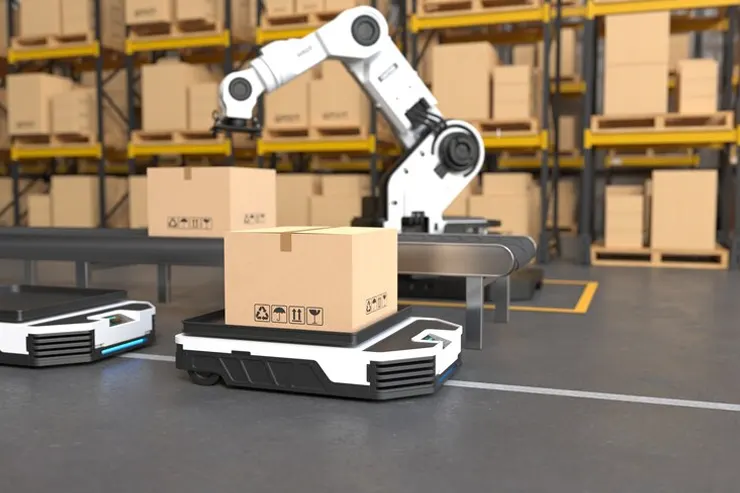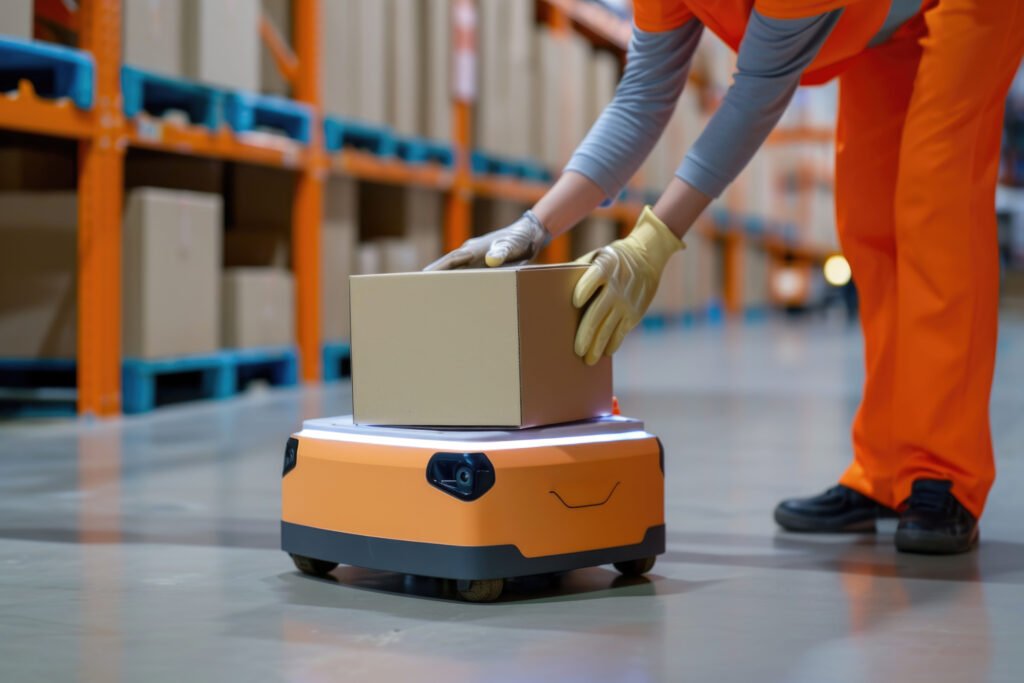In the fast-paced world of eCommerce and supply chain management, robotics is transforming warehousing and fulfilment centres. The integration of robotic technology is not just a trend but a strategic move that enhances efficiency, accuracy, and scalability. Here’s how robotics is reshaping modern warehousing and fulfilment operations:
1. Enhanced Efficiency and Speed
Robotic systems significantly boost the speed and efficiency of warehouse operations. Robots handle repetitive and time-consuming tasks such as picking, packing, and sorting, allowing human workers to focus on more complex and strategic activities. Automated guided vehicles (AGVs) and autonomous mobile robots (AMRs) transport goods within the warehouse with precision, reducing the time spent on manual material handling.
2. Improved Accuracy and Reduced Errors
Accuracy is crucial in warehousing, where mistakes can lead to costly returns and customer dissatisfaction. Robotics enhances accuracy through advanced sensors and algorithms that minimize human error. Robotic systems ensure that the right products are picked and packed with precision, reducing order discrepancies and returns.
3. Increased Scalability
As businesses grow, their warehousing needs evolve. Robotics provides the flexibility to scale operations quickly and efficiently. Robotic systems can be easily integrated into existing warehouse infrastructures, allowing for the addition of more robots or the expansion of their functions without significant disruptions. This scalability ensures that fulfilment centres can keep pace with increasing order volumes and market demands.
4. Enhanced Safety and Working Conditions
Robotics improves workplace safety by taking over dangerous and physically demanding tasks. Robots handle heavy lifting, hazardous materials, and repetitive motions, reducing the risk of injuries for human workers. This shift not only creates a safer working environment but also enhances overall job satisfaction and productivity.




5. Optimized Space Utilization
Modern fulfilment centres are designed to maximize space utilization. Robotics contribute to this goal by enabling more efficient use of warehouse space. Automated storage and retrieval systems (AS/RS) and robotic palletizers optimize vertical space and narrow aisle configurations, allowing for higher density storage and more efficient retrieval processes.
6. Cost Savings and ROI
While the initial investment in robotic systems can be substantial, the long-term cost savings and return on investment (ROI) are significant. Robotics reduce labour costs, minimize errors, and increase throughput, leading to lower operational expenses and higher profitability. The efficiency gains and reduced error rates translate into a more cost-effective fulfilment process.
7. Data-Driven Insights
Robotic systems are equipped with sensors and data analytics capabilities that provide valuable insights into warehouse operations. Real-time data on inventory levels, order processing times, and system performance enable managers to make informed decisions, optimize workflows, and improve overall efficiency.
Conclusion
The role of robotics in modern warehousing and fulfilment centres is transformative, driving advancements in efficiency, accuracy, and scalability. As technology continues to evolve, the integration of robotics will play an increasingly critical role in shaping the future of supply chain management. Embracing robotics not only enhances operational performance but also positions businesses to meet the growing demands of the eCommerce landscape with agility and precision.
As you explore the potential of robotics for your own warehousing and fulfilment operations, consider the numerous benefits they bring, from streamlined processes to improved safety and cost savings. The future of warehousing is here, and robotics is at the forefront of this revolution.




